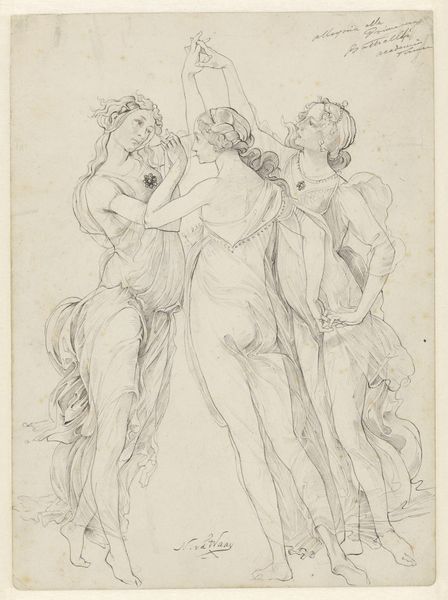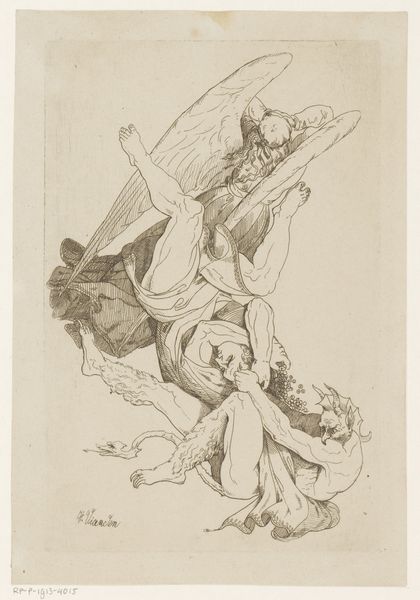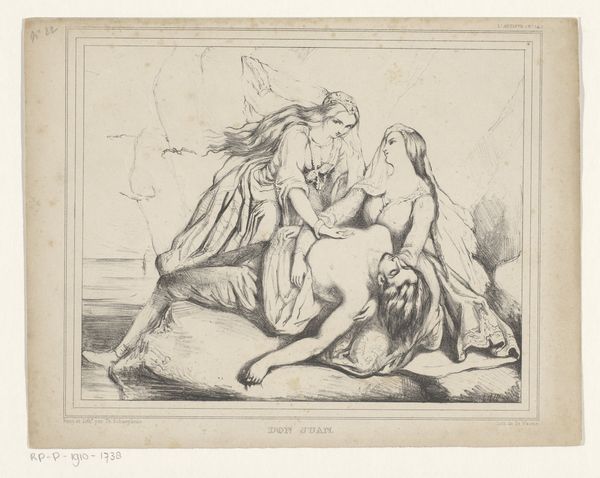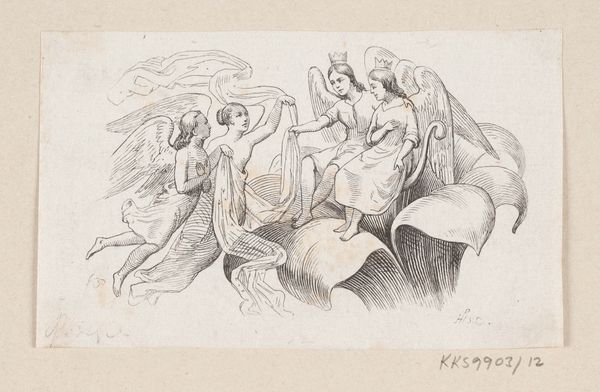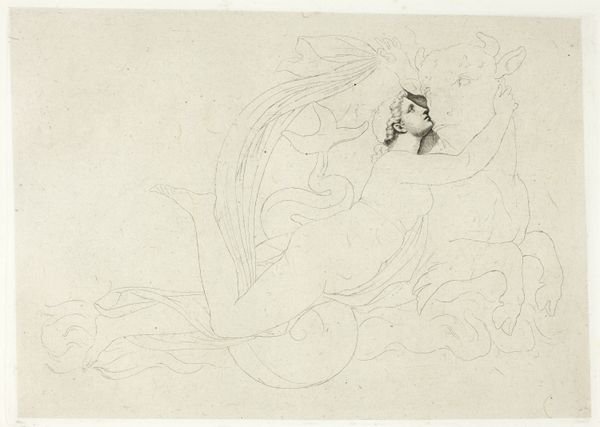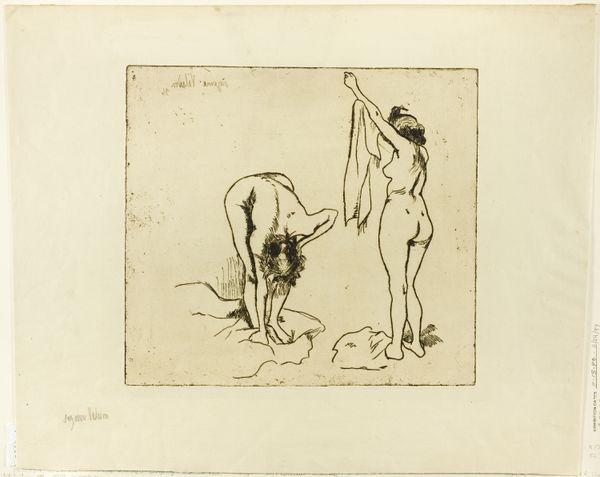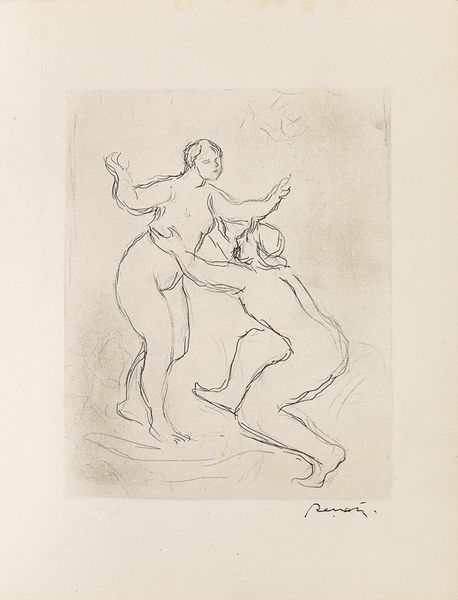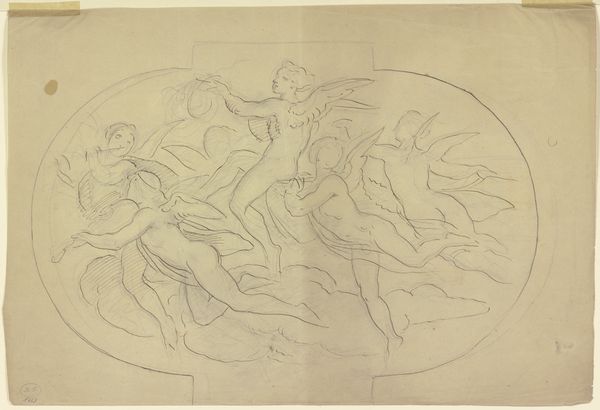
Dimensions: 156 mm (height) x 197 mm (width) (bladmaal)
Curator: Let's turn our attention to this evocative ink drawing titled "Nessus and Deianira," created sometime between 1870 and 1881. What strikes you about it? Editor: The sheer tension in the line work is palpable. The urgency of the moment is powerfully conveyed. It's unsettling. Curator: Indeed. The scene depicts a moment from Greek mythology. Nessus, the centaur, is carrying Deianira across the river, as she is struggling. But this representation carries the weight of patriarchal narratives surrounding female bodies. Deianira’s perceived vulnerability feeds directly into her eventual manipulation by Nessus, where she becomes tragically implicated in the downfall of her husband, Hercules. Editor: Absolutely. I see the layers of cultural encoding too. On a social and institutional level, how might such a scene perpetuate established gendered power structures by romanticizing this imagery of forced submission. Is there an aesthetic strategy for dominance presented? Curator: Certainly. The heroic male figure against the backdrop of a landscape... We must examine the socio-political conditions influencing how art interprets historical and mythological narratives. Especially with drawing practices as this piece. Editor: Yes, that tension is interesting, because, technically speaking, this seems almost like a preliminary sketch, meant perhaps for a more permanent representation of this episode. The loose ink lines don't necessarily convey any message beyond a draft form. Curator: Yet, it does convey a mood. Romanticism emphasized passion and drama and so even in its incomplete form we're presented with the story of female struggle. That makes us consider not just the historical narrative, but its ongoing relevance to discussions about consent, agency, and the depiction of women in art today. How has the artwork circulated through culture? Editor: Food for thought, indeed. Considering its position today, "Nessus and Deianira" pushes us to engage in critical dialogue concerning both history and representation in visual culture. It provides space for us to interrogate how historical artworks operate in society today.
Comments
No comments
Be the first to comment and join the conversation on the ultimate creative platform.

